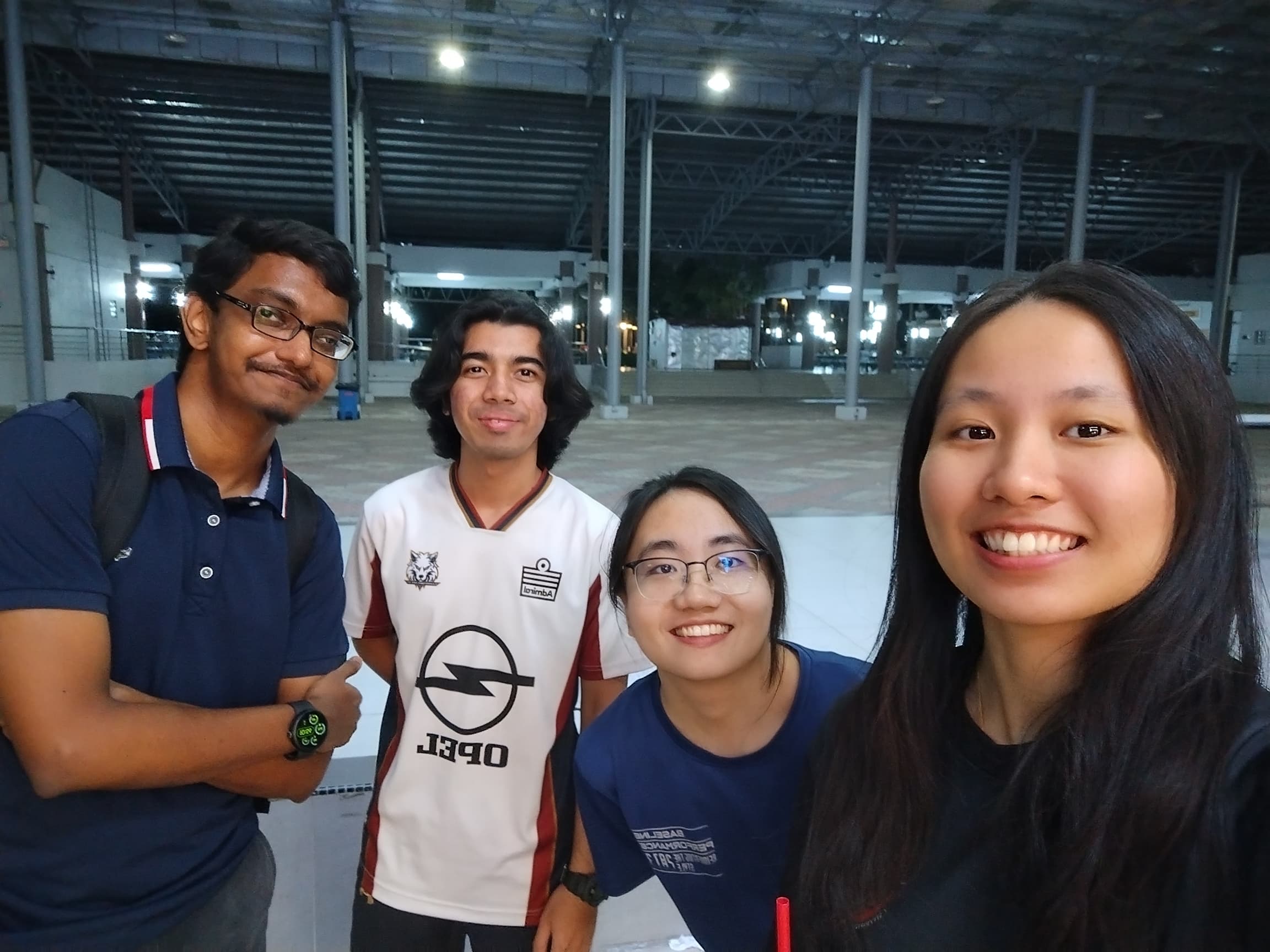What it does
SPARC is an automated cleaning solution designed to tackle dust and dirt accumulation on solar panels. It increases cleaning efficiency, reduces manual labour and boosts solar energy yield, maintaining optimal panel performance year-round.
Your inspiration
During our final year of university, we visited TNB Selambau Solar, a large-scale solar farm in northern Malaysia, and observed that most solar panels were heavily covered in dust, reducing their efficiency by up to 30%. Workers relied on manual cleaning using long-handled brushes and external water sources. It took a full month to clean one zone, and with 14 zones in total, each panel was cleaned only once a year. Seeing the inefficiency and labour required, we were inspired to design a semi-autonomous cleaning robot to improve cleaning efficiency and reduce manual effort, ensuring more consistent and effective solar panel maintenance.
How it works
Once activated, SPARC travels along the length of the solar panel, using rectangular brushes and angled spray nozzles to remove dust and dirt efficiently. Water is evenly sprayed at a 50° angle in front of the brush to loosen debris before contact. An ultrasonic sensor at the front detects the edge of the panel, prompting the robot to stop, reverse direction, and complete a full cleaning cycle. SPARC is self-guided to stay aligned on the panel and avoid falling off during operation. The brush unit matches the panel’s width for full coverage in one sweep and is detachable for easy maintenance. SPARC delivers safe, effective, and automated cleaning with minimal manual supervision required.
Design process
SPARC was developed using the VDI 2221 design methodology, starting with problem identification during a field visit to TNB Selambau Solar. Its functional requirements evolved from insights shared by site operators. Several conceptual designs were generated using morphological analysis to explore combinations of cleaning mechanisms, drive systems and control strategies. These concepts were evaluated using a weighted Pugh matrix to determine the most practical solution: a dual-brush, track-driven configuration developed into SPARC V1. Initial analysis showed that the robot’s weight was directly applied to the solar panel surface, raising concerns about potential damage and long-term reliability. In response, SPARC V2 was reengineered to shift the weight onto the panel frame, improving structural safety. It also featured a wider chassis for better load distribution and a self-guided mechanism to ensure proper alignment and prevent falls. The prototype used aluminium extrusion profiles and 3D-printed parts. Additive manufacturing heuristics were applied to simplify geometry, integrate functions and ease assembly. Feedback from user testing led to refinements in guide tension and nozzle placement. Modular construction and cost-effective materials ensured future scalability.
How it is different
SPARC redefines solar panel cleaning with a safer, smarter and more efficient design. Unlike many existing robotic cleaners that place weight on panel surfaces, SPARC rests on the frame, reducing the risk of cracks or damage. Its self-guided movement, aided by spring-loaded side rollers and alignment guides, ensures stability across various layouts. Integrated ultrasonic sensors detect panel edges in real time, triggering automatic reversal to prevent falls without manual oversight. Lightweight and modular, SPARC is easy to deploy for both small-scale and large-scale systems. Quick brush replacement minimises downtime and boosts efficiency. Designed with additive manufacturing heuristics, its parts feature optimised geometry and reduced material waste. With IoT connectivity, users can monitor and control SPARC remotely via smartphone or central systems. By merging automation with practical field design, SPARC sets a new standard in robotic solar maintenance.
Future plans
We aim to evolve SPARC into a fully reconfigurable and intelligent cleaning solution adaptable to various solar panel sizes, layouts and environments. Upcoming innovations will include better modularity and advanced sensors like infrared, IMU and gyroscope for improved positioning, edge detection and terrain awareness. Smarter control algorithms will enhance autonomy, safety and cleaning precision. We also plan to optimise energy usage and simplify maintenance for long-term deployment. Real-world testing and pilot implementations with solar farm operators will help position SPARC as a scalable, future-ready solution in solar maintenance.
Awards
SPARC won Gold during the Final Design and Prototyping Stage of the Integrated Design Project II Exhibition at Universiti Tenaga Nasional. It was also showcased at UNITEN booth during National Training Week 2025. TNB, Malaysia’s largest energy provider, recognised its potential in enhancing solar panel cleaning practices.



Share this page on